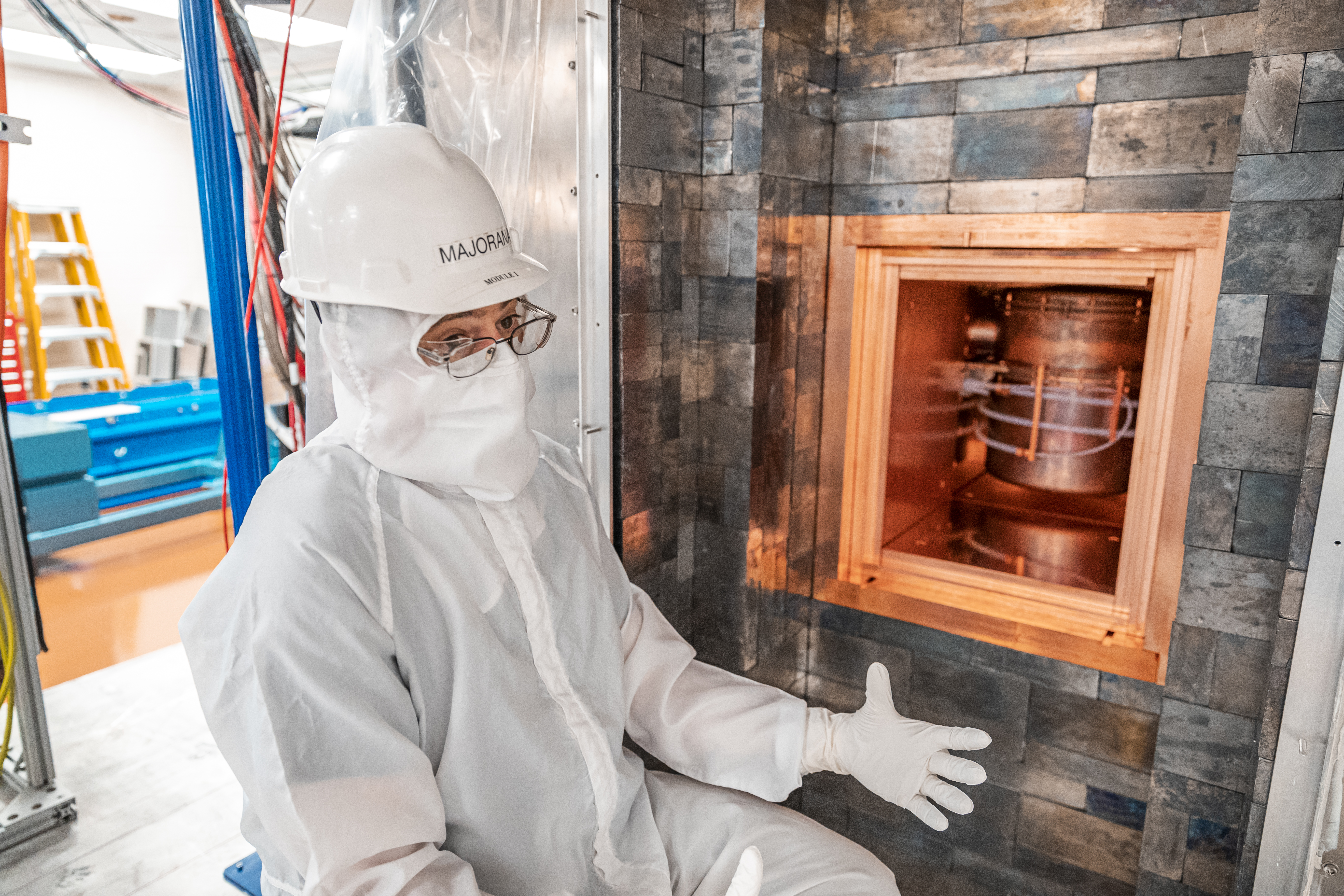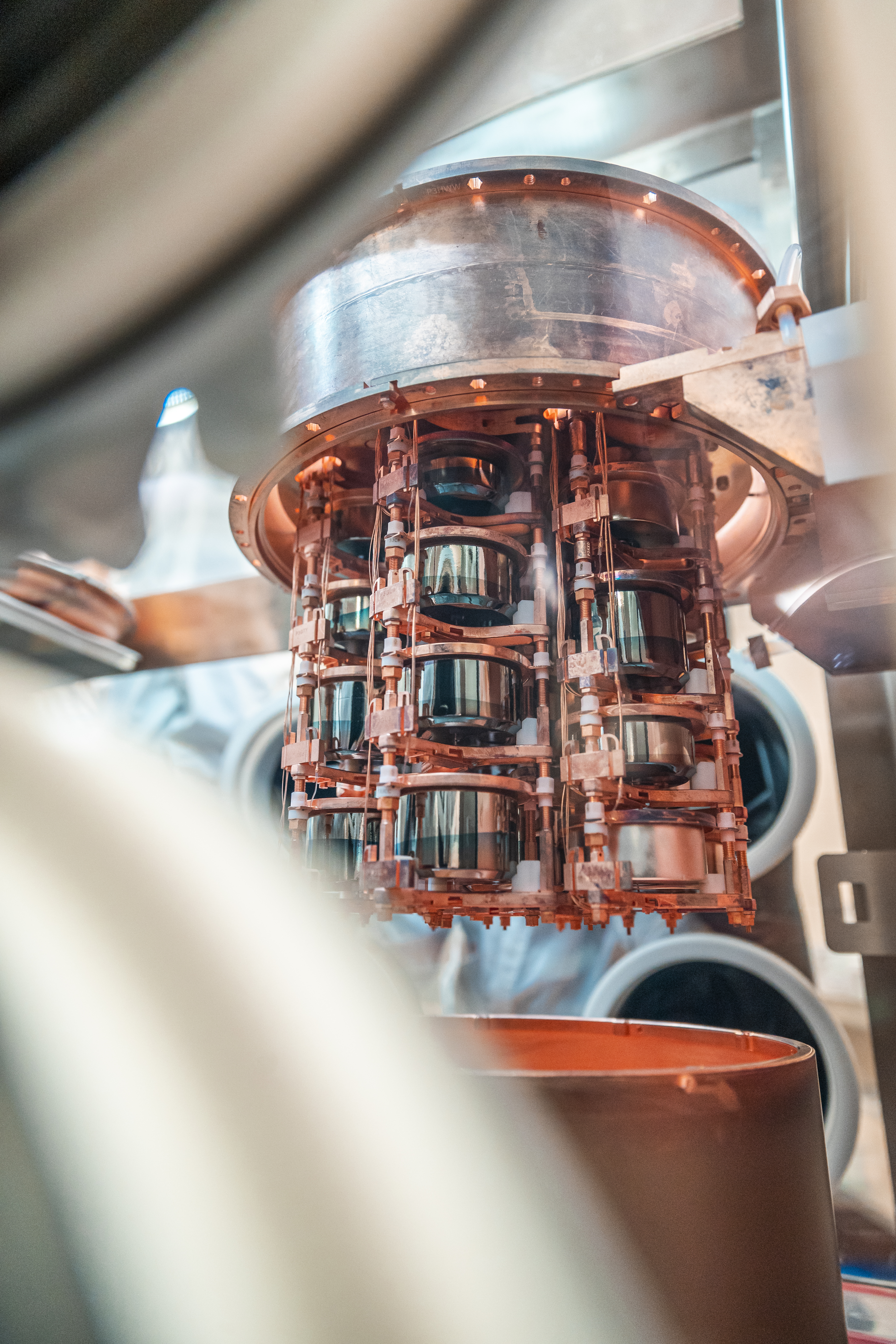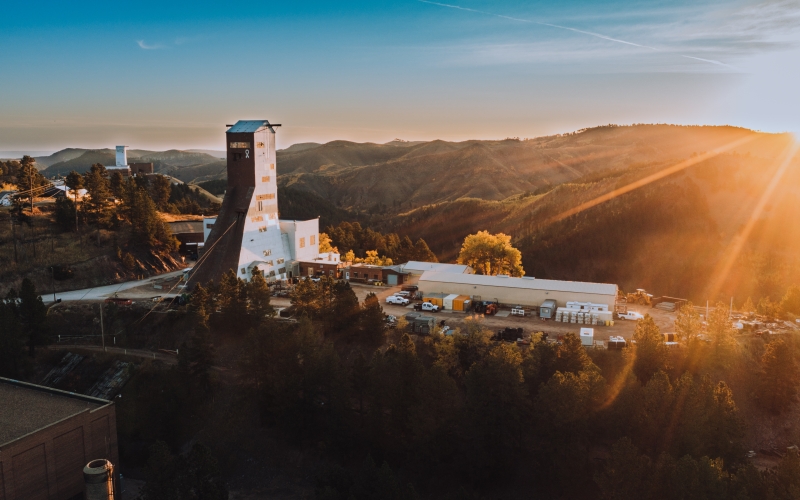
When researchers with the Majorana Demonstrator pulled back the layers of shielding earlier this month, the cryostat modules were visible for the first time in nearly four years.
For the past 1,204 days, detectors have been collecting data, silent and undisturbed, inside a fortress of lead and copper shielding a mile beneath the earth’s surface. This December, researchers with the Majorana Demonstrator (Majorana) pulled back a piece of that shielding to peer inside.
Housed on the 4850 Level of the Sanford Underground Research Facility (Sanford Lab), Majorana has been looking for a rare type of particle decay that could help us understand the existence of matter in the universe. Just how rare is this proposed physics event? To observe it in just two atoms, you’d have to wait over 2 x 1025 years — that’s a 2 followed by 25 zeroes.
To better their chances of witnessing this elusive event in our lifetime, researchers proposed an experiment. This experiment would house a large concentration of atoms with the potential to see this rare decay. It would also have an extremely low background, protected from radiation by layers of shielding and rock overburden.
Majorana demonstrated that such an experiment is possible. While it didn’t detect the particle decay, it proved that a scaled-up experiment—one that is more than 33 times its size—might be able to do so.
“If we watch just one atom, waiting anxiously for it to decay, we would have to watch it for longer than the age of the universe. To win this game, we have to increase the mass we are watching,” said Vincent Guiseppe, co-spokesperson of the Majorana Collaboration and a research staff member at Oak Ridge National Laboratory. Majorana used 30 kilograms of an enriched isotope of germanium in its detector; the next-generation experiment, called LEGEND-200, will use 200 kilograms.

Guiseppe explains how layers of shielding protect the detectors from background "noise," such as trace amounts of dust and radiation. Photo by Nick Hubbard
LEGEND-200, the Large Enriched Germanium Experiment for Neutrinoless ββ Decay, will be built beneath the mountains of Italy at Gran Sasso National Laboratory (LNGS). To create the next phase of this international rare-event search, members of the Majorana collaboration joined with GERDA, another neutrinoless double-beta decay experiment using the same enriched isotope of germanium at LNGS, and other researchers.
While still taking valuable physics data, Majorana is pivoting to a new purpose: testing the detectors that will be used in LEGEND-200. This new use is one reason for the shield’s long-awaited opening. Researchers will replace five of Majorana's detectors with four newly fabricated detectors for LEGEND-200.
Each detector is unique. Grown as crystals through a process called “pulling,” each has a slightly different height and diameter. By running tests underground and inserting the detectors into Majorana, researchers will better understand their performance in LEGEND-200.
“Majorana is the lowest background environment we have,” said John Wilkerson, principal investigator for Majorana and U.S. principal investigator for LEGEND-200. “By installing them inside, we can further characterize the detectors, while also increasing our total physics data taken before Majorana is decommissioned.”
Opening the shield was a week-long event. Researchers removed an outer 12-inch layer of heavy plastic, then slowly drew back an entire wall of the shield. The section that was removed included a module holding 22 kilograms of suspended germanium, 7 tons of lead and copper shielding and countless pieces of connectivity hardware. This interconnected equipment was air-skated to the opposite side of the laboratory.
“The process of removing the wall took about half a morning,” Guiseppe said. “We had to move it incredibly slowly, so the detectors aren’t damaged.”
On the other side of the lab space, the module was fitted inside a glove box. There, researchers removed five Majorana detectors and will soon replace them with four LEGEND-200 detectors. When the swap is complete, the detector module will be sealed up once again.

Inside a glovebox, Majorana's germanium detectors hang suspended from an open cryostat module. Five of these detectors will be swapped with four newly-fabricated detectors for LEGEND-200. Photo by Nick Hubbard
“This is the only time you can give each detector the TLC it needs to really understand its performance. Once you put them into the LEGEND-200 array, we will be operating all of them at once. Now is the time to get individualized information,” Guiseppe said. The opening also allowed the team to make upgrades to connectivity hardware.
In addition to testing detectors, Majorana will provide ultra-pure copper and 35 enriched germanium detectors for LEGEND-200. When LEGEND-200 is built, the detectors will be packed in a special cargo container and shipped across the Atlantic Ocean. Finally, they will arrive at their final destination: 4,500 feet beneath Gran Sasso mountain in Italy.
